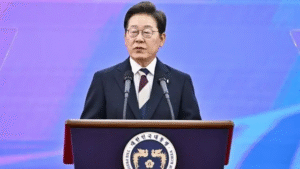Danger Zone: China’s Escalating Military Activity near Taiwan and its Global Repercussions

Tensions soar between China and Taiwan as Beijing ramps up military flights near the island nation. This surge follows the passage of China’s aircraft carrier, the Shandong, further stoking anxieties about a potential military clash. Taiwan’s record-breaking detection of Chinese military aircraft highlights China’s growing assertiveness and raises serious concerns about regional stability.
This escalation is not a one-off event. China has been steadily increasing its military presence around Taiwan in recent years, conducting frequent air and naval drills and sending aircraft into Taiwan’s Air Defense Identification Zone (ADIZ). These actions are widely seen as a deliberate attempt to intimidate Taiwan and pressure it to accept unification with mainland China.
A Historical Impasse: Roots of the Conflict
The current tensions stem from the unresolved political status of Taiwan. China views Taiwan as a renegade province and considers it an inseparable part of its territory. Taiwan, on the other hand, views itself as a self-governing democracy and vehemently rejects any claims of Chinese control. This fundamental disagreement has been a source of friction for decades, and China’s growing global power has only intensified the issue.
Beyond Borders: Global Stakes in the Taiwan Strait
The situation in the Taiwan Strait carries significant geopolitical weight. Taiwan is a strategically crucial island located in the first island chain, a string of islands that acts as a natural barrier between China and the Pacific Ocean. Additionally, Taiwan plays a vital role in the global semiconductor industry, producing a large portion of the world’s advanced chips.
Any conflict between China and Taiwan would have devastating consequences for regional security. It could potentially trigger a wider military confrontation involving the United States, which has long maintained close ties with Taiwan and is legally obligated to provide military assistance in case of an attack.
Uncertain Future: Potential Scenarios and Risks
The future trajectory of the situation remains unclear. Here are some potential scenarios and the associated risks:
- Stalemate: The current state of tensions with occasional flare-ups could persist for some time. While not ideal, this scenario might be preferable to a full-blown conflict.
- Unintended Escalation: Miscalculations or misunderstandings by either side could lead to an accidental escalation, potentially triggering a military confrontation.
- Coercive Measures: China might resort to increasingly aggressive military actions to coerce Taiwan into accepting unification. This scenario would pose a serious threat to Taiwan’s sovereignty and democratic way of life.
The risks associated with each scenario are significant. A full-blown conflict would be catastrophic, causing widespread casualties and economic disruption. It could also destabilize the entire region and lead to a major power confrontation between China and the United States.
Finding Common Ground: The Path Towards Peace
Finding a peaceful resolution to the Taiwan question requires a delicate balancing act. Both sides need to demonstrate restraint and avoid actions that could further escalate tensions. Maintaining open communication channels and working towards building trust and finding common ground are crucial.
The international community also has a role to play. The United States should continue to support Taiwan’s right to self-defense and its ability to participate in international organizations. However, it should also avoid actions that could be perceived as provoking China. Other countries should call for a peaceful resolution to the conflict and urge both sides to engage in dialogue.
The situation in the Taiwan Strait is a complex and sensitive issue with no easy solutions. However, through careful diplomacy, strategic restraint, and a commitment to peaceful solutions, it is possible to de-escalate tensions and find a way forward that respects the security interests of all parties involved.




















